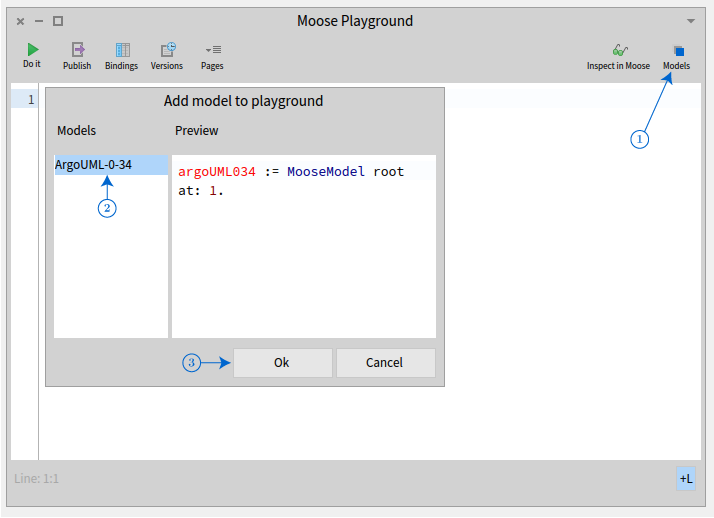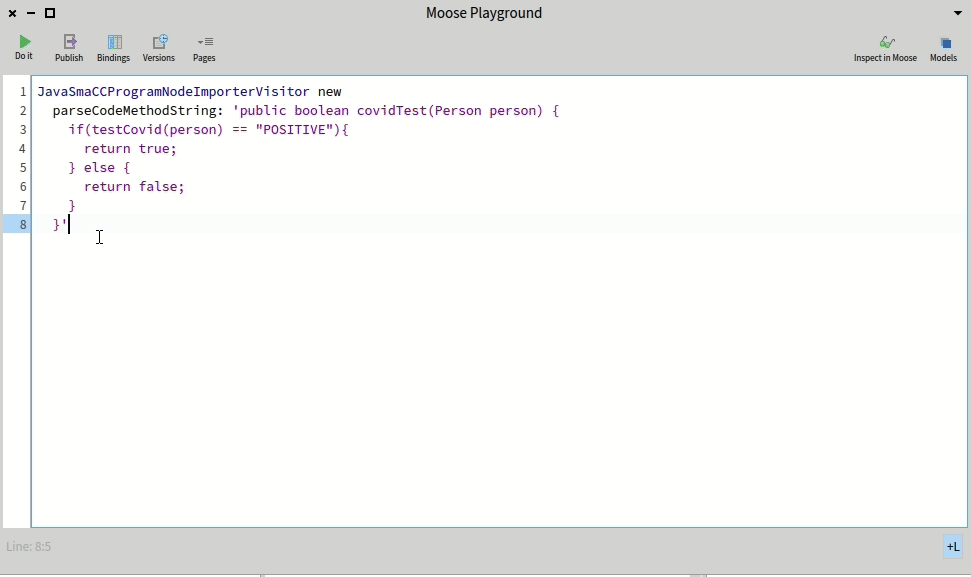Introduction
When we are interested in the migration/modernization of projects we are using models of the project and their meta-models. Moose revolves around a powerful Famix meta-model that allows us to do several operations. For instance, previous posts present how to analyze and query a model, visualize a model with plantUML, or create a model, etc.
FAST is a meta-model that helps us understand source code in a less abstract way. Indeed, FAST is based on AST (Abstract Syntax Tree) which is close to the source code. And as the devil is in the details, FAST contains interesting elements when analyzing programs (for example some specific expression or statement), and effectively this is what makes the difference between FAST and Famix. (Consult this overview about the FAST model).

In this blog post we will explain how to load FAST Java and generate a FAST model of Java code. For this we will take ArgoUML, an open-source Java project, as an example.
Overview & Prerequisites
First of all, we have to understand from where we are going to start and where we are going to end up. As already mentioned, we will take the AgroUML’s java code and the goal is to generate the corresponding AST and do analyses on it. To do this, 3 steps are necessary to have the AST as illustrated in the figure below:
- Parse Java to build a Famix model
- Load the model into Moose
- Generate the AST

Before starting, we must download the source code and the Famix model of the ArgoUML project, step 1 of the diagram above (follow this blog for more details).
Configuration
Now, we will import the Famix model from the ArgoUML-0-34.json file in the Models Browser. Then, we should know that the FAST meta-model is specific to a gien programming language, i.e for Pharo code we need FAST for Pharo, for X language code we need the FAST meta-model for the X language. Right now, there are two FAST meta-models: FAST Java and FAST Pharo.
In the following, we will generate the AST of a class (or method) for Pharo/Java code in three different ways: directly from some source code, from a method in Pharo, or from a Famix entity.
FAST Installation
To install FAST Java you can run the following script on Moose Playground:
Metacello new
githubUser: 'moosetechnology' project: 'FAST-JAVA' commitish: 'v3' path: 'src';
baseline: 'FASTJava';
load: 'all'
To install FAST Pharo use the following script:
Metacello new
baseline: 'FASTPharo';
repository: 'github://moosetechnology/FAST-Pharo:v2/src';
load: 'importer'.
Java code as string
In this case, we will use a specialized importer “FAST-Java importer” to import the AST from a method source code. The complete code of the method to import is between single quote (i.e. a Pharo string) in the following code:
JavaSmaCCProgramNodeImporterVisitor new
parseCodeMethodString: 'public boolean covidTest(Person person) {
if(testCovid(person) == "POSITIVE"){
return true;
} else {
return false;
}
}'
Pharo class or method
The following script imports the method #collect: of Collection :
FASTSmalltalkImporterVisitor new
runWithSource: (Collection >> #collect:) sourceCode
Generate FastJava model
In this section, we will not proceed as above. Instead, we start from a class/method of the Famix Java model and we will load its FAST representation.
We will add the model to the Playground

We got this:
argoUML034 := MooseModel root at: 1.
We pick any model class from the model:
class := argoUML034 allModelClasses anyOne.
And finally we generate the AST using generateFastJava:
class generateFastJava
Navigating Through AST
One nice way to explore a FAST model is to use the source code and the tree extensions of the inspector. It allows one to navigate in a FAST model and see the code corresponding to each node.
To use it, we start from the Java model loaded above. Then, we select a model method entity. On the right-hand pane of the inspector, select the Tree tab, on the left-hand pane, select the source code extension. The source code is highlighted and the area selected corresponds to the entity selected in the right-hand panel. ( from FAST-Pharo article )

Conclusion
In this post, we saw how to load the AST of a Pharo/Java model using FAST. The FAST model is useful when we need to understand more details about our model (for example identifiers, expression statements .. etc) which are not provided by Famix.